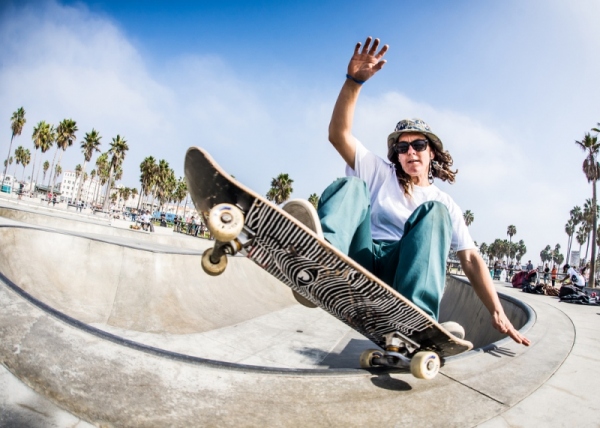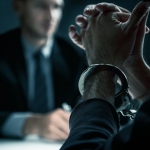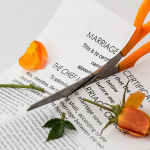Although skateboarding has been around since at least the 1950s and gained widespread popularity during the 1970s, it shows no signs of slowing down. In fact, there were 6.44 million Americans who participated in skateboarding during 2016. And with skateboarding set to make its debut at the Summer Olympic Games in 2020, it’s likely that this sport will become even more prevalent among the general public. That may be particularly true in states like California, which provides pleasant weather year-round.
The growing popularity of skateboarding may be welcome news for many Americans, seeing as it’s a fun way to engage in a more active lifestyle. However, there are some negative health considerations to keep in mind. According to the National Safety Council, approximately 125,145 people who were injured in skateboarding accidents in 2015 were treated in hospital emergency rooms across the country. And while fatal skateboarding accidents are rare, they can happen. Nationwide, 28 people were killed while skateboarding in 2014. Because skaters are so vulnerable with very little to protect them in the event of an injury, it’s no surprise that the most serious skateboarding accidents often involve drivers who fail to make good decisions on the road.

While the act of skateboarding can be enjoyable for many, it’s essential to know how to prevent accidents, how to care for injuries, and what to do if you become hurt due to someone else’s negligence.
Accident prevention tips for skateboarders
For many skaters, there’s nothing better than soaking up the sun while riding their boards around the pier. The California coastline is a popular spot for skaters, but that doesn’t mean it’s a safe haven. It’s essential for all skateboarders to take steps to prevent serious accidents and to follow all official recommendations and state laws.
The US Consumer Product Safety Commission recommends that children under the age of five should refrain from riding skateboards, as their lack of physical and mental development makes them much more prone to serious injury. Children between the ages of six and 10 should be closely supervised while skateboarding due to their increased risk of injury. Further, the American Academy of Pediatrics urges skateboarders to never ride near traffic and to never “skitch a ride” (e.g., hold onto the side of a moving vehicle while riding a skateboard) due to the physical dangers of this act.
California law mandates that all skateboarders younger than the age of 18 wear helmets, but skaters of all ages would do well to follow this advice. You should also ensure that your helmet fits properly. It should sit low on your forehead without moving in either direction when you shake your head back and forth. It should not hinder your vision or hearing and should feature side straps, pads for a tight fit, and a chin strap with a buckle.
The National Safety Council recommends that skaters wear close-toed, slip-resistant shoes, guards, and padding to minimize accidents and their impact. Skaters should always check their boards prior to using them, refrain from riding in crowds of non-skaters, and practice more complex tricks in designated safe areas. Never use headphones while skating or attempt to have more than one person per board. You should always obey all local laws about where you can and cannot skate. In general, skate at your current level of ability and do not take unnecessary risks.
Knowing how to fall properly can also reduce your risk of serious injury. If you feel as if you’re losing your balance, it’s best to crouch down on the board so you’ll fall from a lower height. Aim to land on the fleshier parts of your body to reduce injury. Rather than bracing with your arms, try to relax into the fall and roll. Be sure to practice falling on soft grass so that this scenario can become part of your muscle memory.
What to do after sustaining a skateboarding injury
Despite all of your best efforts, you might become injured while skating. While new skaters are the most prone to becoming injured, these accidents can happen to anyone regardless of skill level. Some of the most common skateboarding injuries include cuts, bruises, sprains, and fractures of the wrist, arms, legs, back, or skull. Broken noses and jawbones can also occur. In cases that involve collisions between skateboarders and motorists, spinal cord injuries and traumatic brain injuries are not uncommon.
If you do become injured in a skateboarding accident, the first thing you should do is to seek out immediate medical attention. It’s possible you may sustain internal injuries, which must be diagnosed by a healthcare professional. Do not skate through the pain or ignore your injuries in the hope they will heal on their own; this can often make matters worse in the long term. After an injury, you must give your body ample time to heal. Always follow directions from your doctor to ensure a swift and full recovery.
For those who become injured in a skateboarding accident involving another vehicle, it’s essential to contact police to make a formal report. You should also obtain contact information from the motorist involved and any witnesses at the scene. If possible, preserve photographic evidence for later use.
When to contact a skateboarding accident lawyer
Laws pertaining to skateboarding and skateboarding accidents can be incredibly complex. Los Angeles County prohibits skateboarding in excess of 10 miles per hour, as well as skating on roads or highways that have three percent grades or higher. However, state and local laws do not eliminate the duty of care held by motorists to skateboarders, bicyclists, and pedestrians. In other words, if a driver is negligent in their duty to watch for these individuals and injuries occur as a result, that driver may be held legally and financially responsible in a court of law.
It may also be important to note that landowner liability may come into play when skateboarding injuries occur. Due to premises liability laws, a skateboarder who becomes injured on public or private property as a result of property hazards may be able to bring a suit against the landowner.
If you are injured in a skateboarding accident in California, you should contact a personal injury attorney in Santa Monica to discuss the options that may be available to you. While not every injury may warrant the filing of a lawsuit, it’s entirely possible that you may have a case against another party involved. Even if the skateboarder in question may be partially to blame for the accident or might not have followed regulations to the letter, your lawyer can answer any questions you may have an advise you on the next steps to take.




